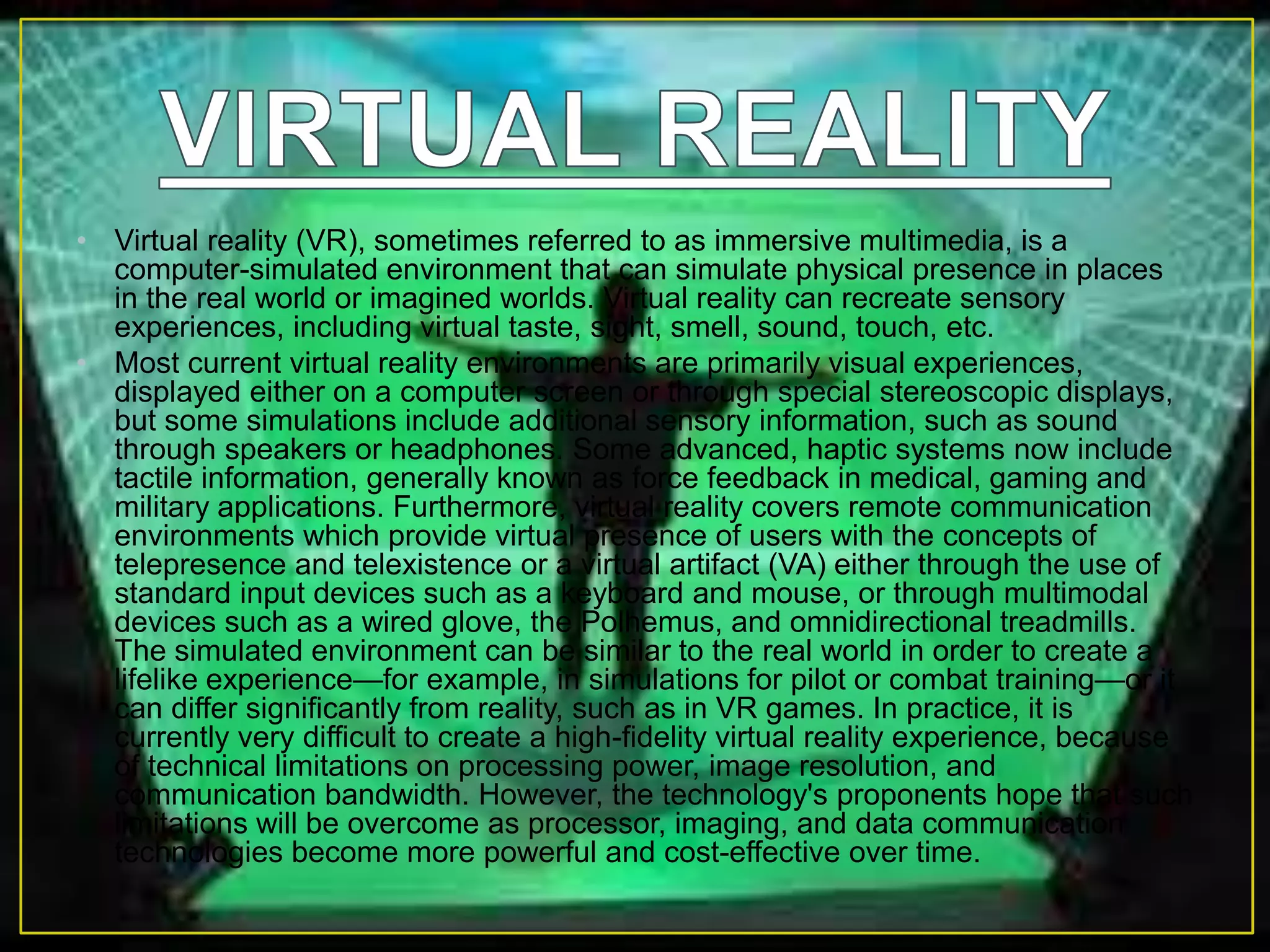The document traces the evolution of computers through 5 generations from the 1940s to present day:
1) First generation computers (1940s-1950s) were room-sized machines that used vacuum tubes and were very expensive to operate.
2) Second generation computers (1950s-1960s) were smaller and used transistors instead of vacuum tubes. Magnetic core memory replaced drums.
3) Third generation computers (1960s) were smaller still with integrated circuits and stored-program architecture. Popular personal computers emerged like the Apple II.
4) Fourth generation computers (1970s-1980s) used microprocessors and had GUI interfaces. The personal computer revolution took off with machines like the IBM PC and Apple
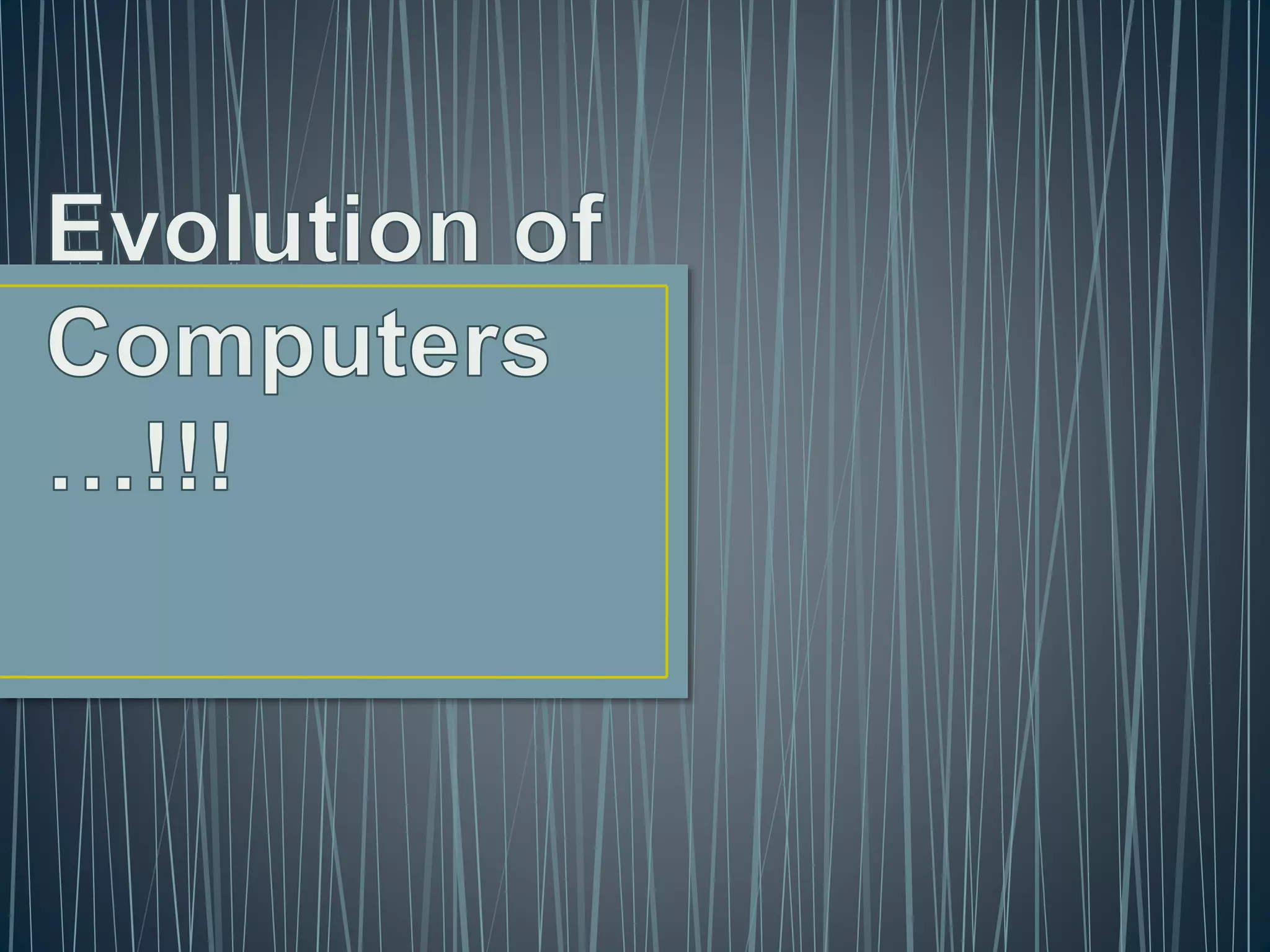

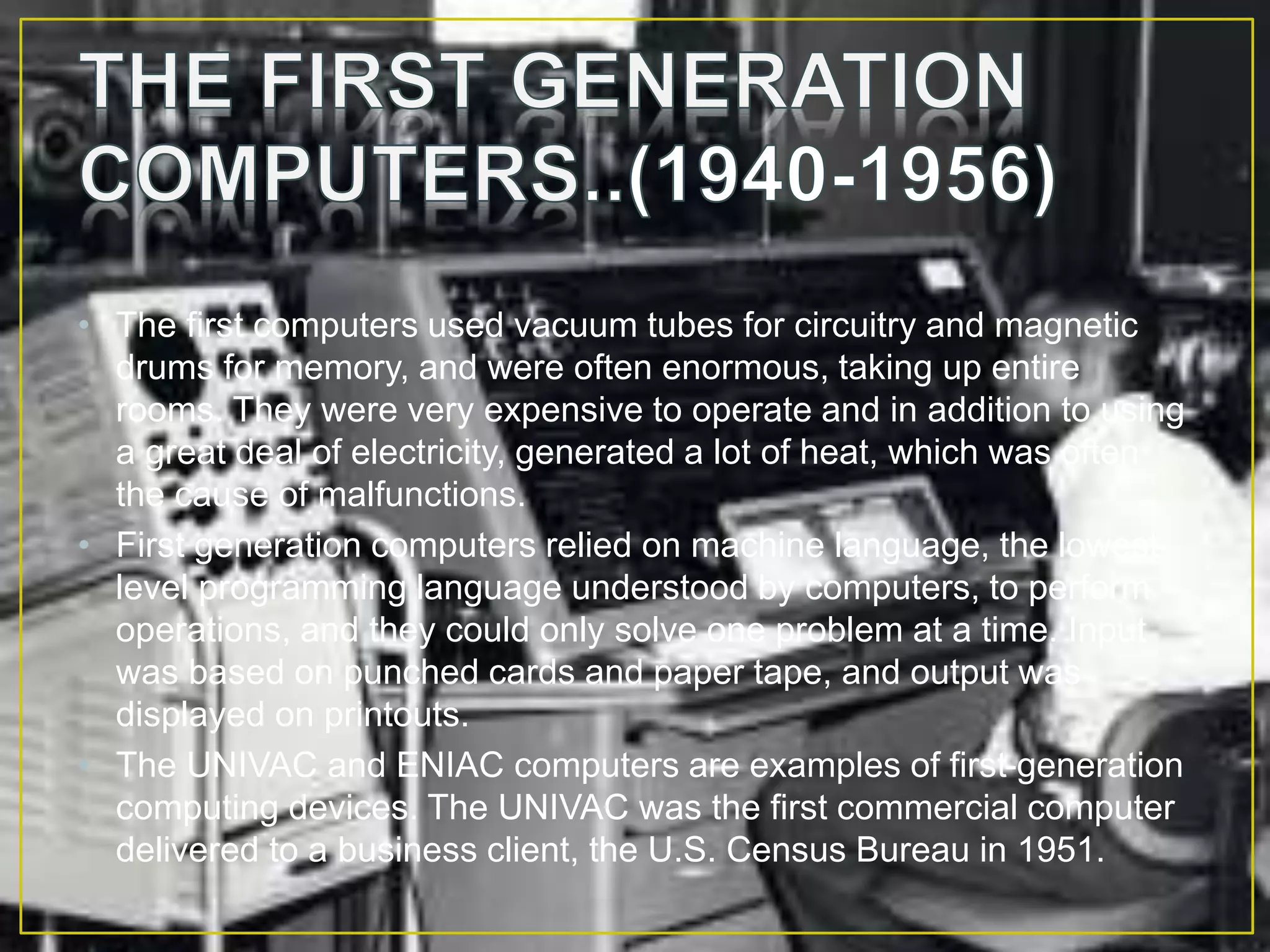
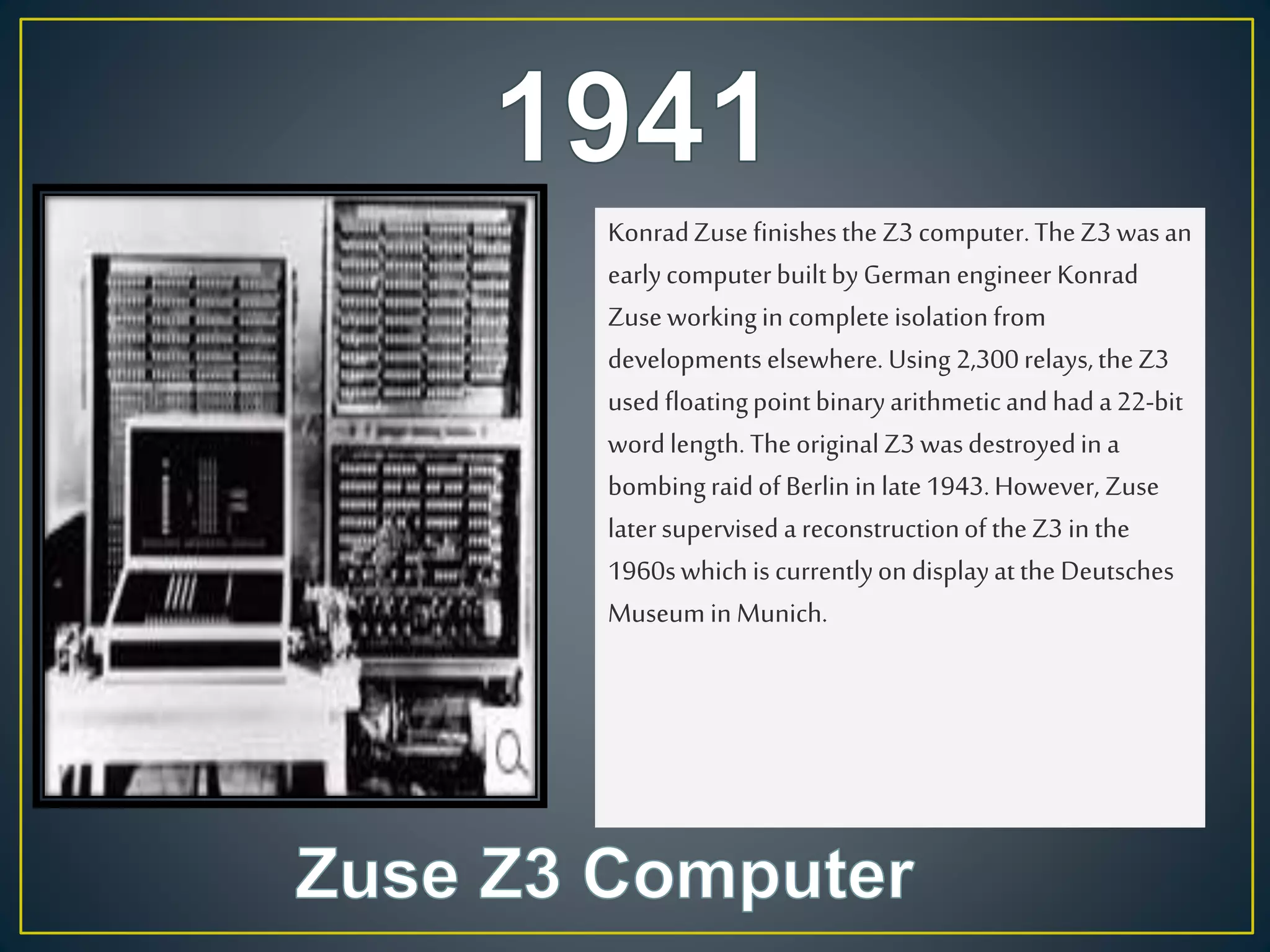
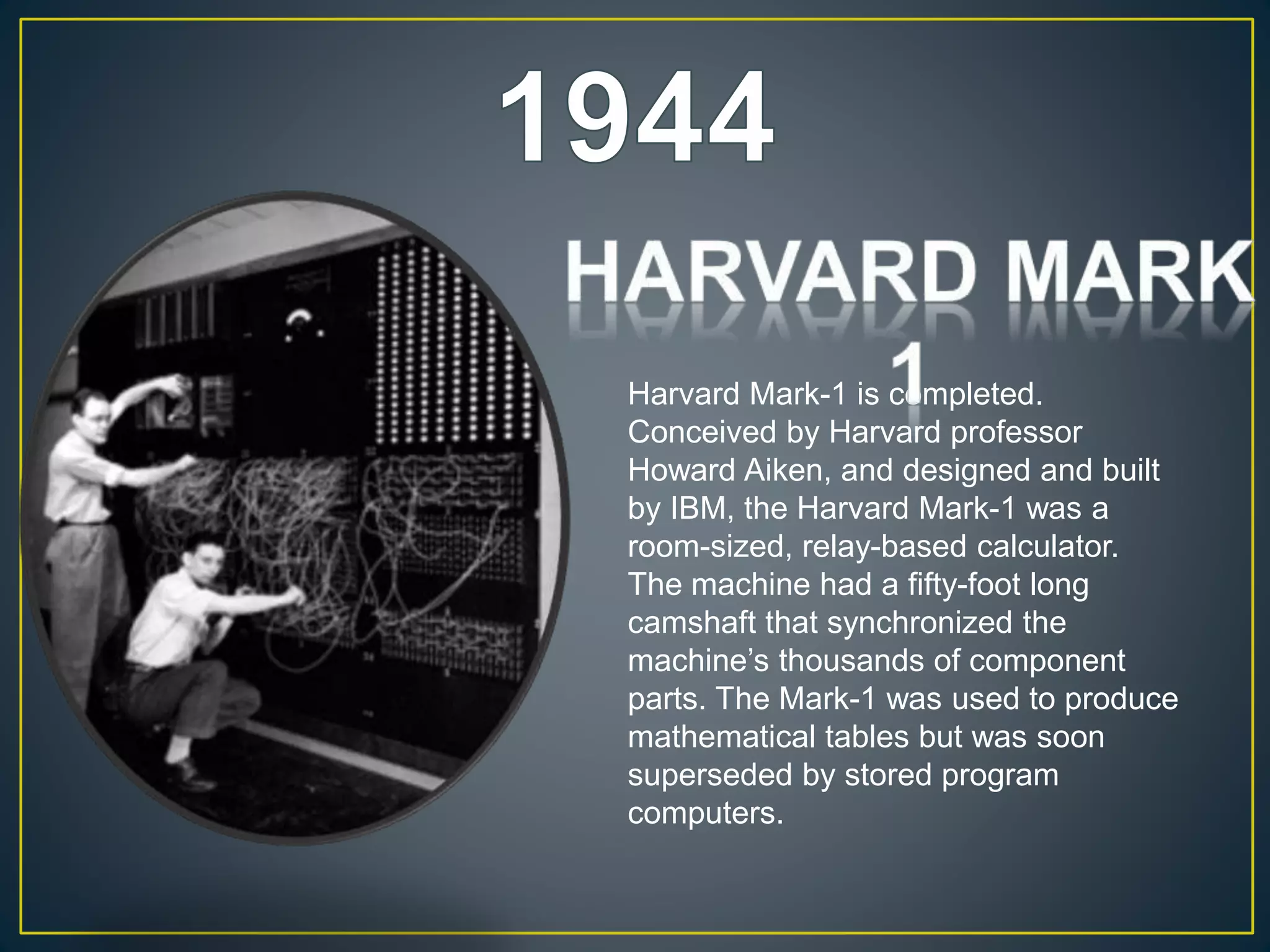
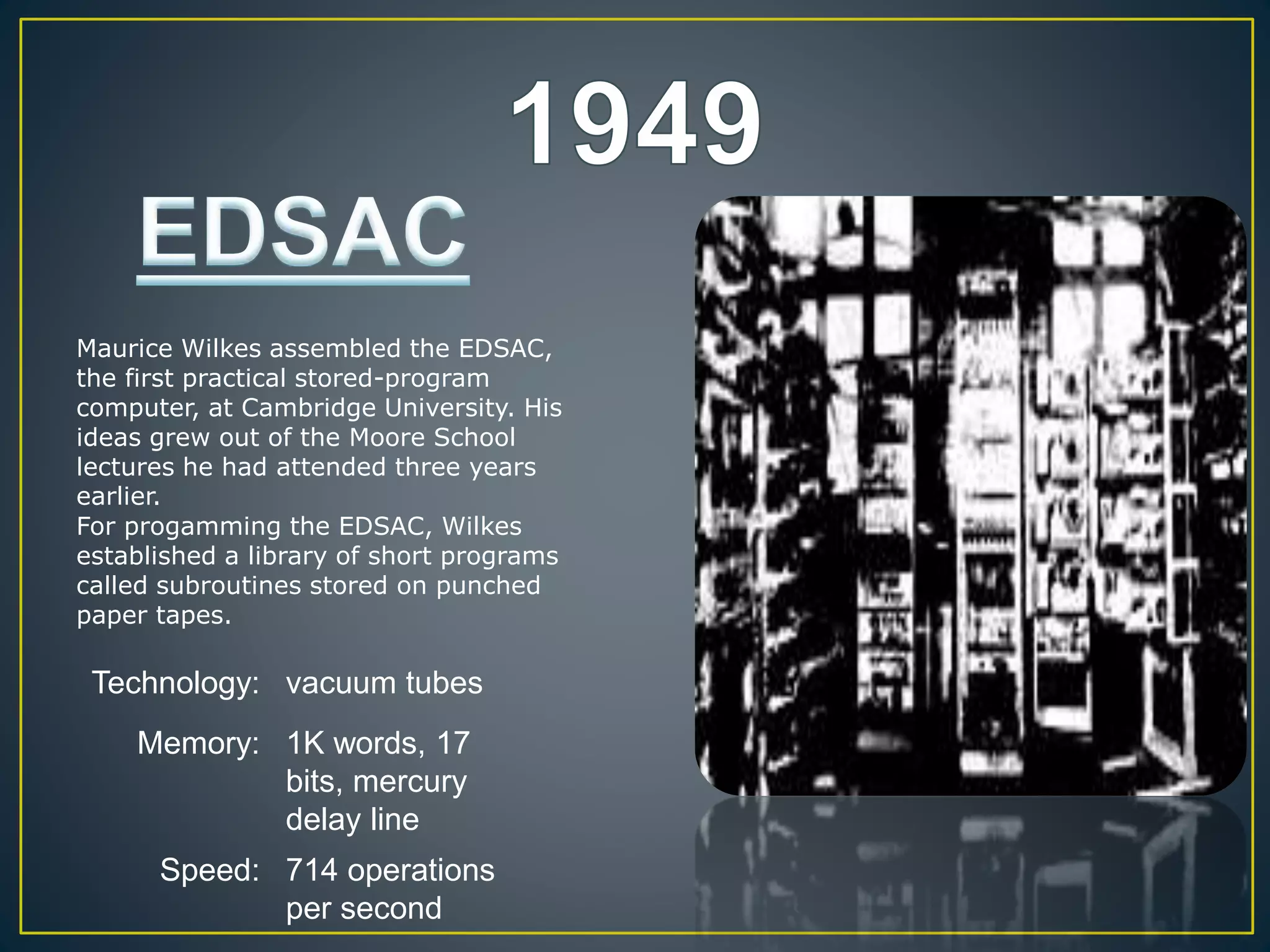


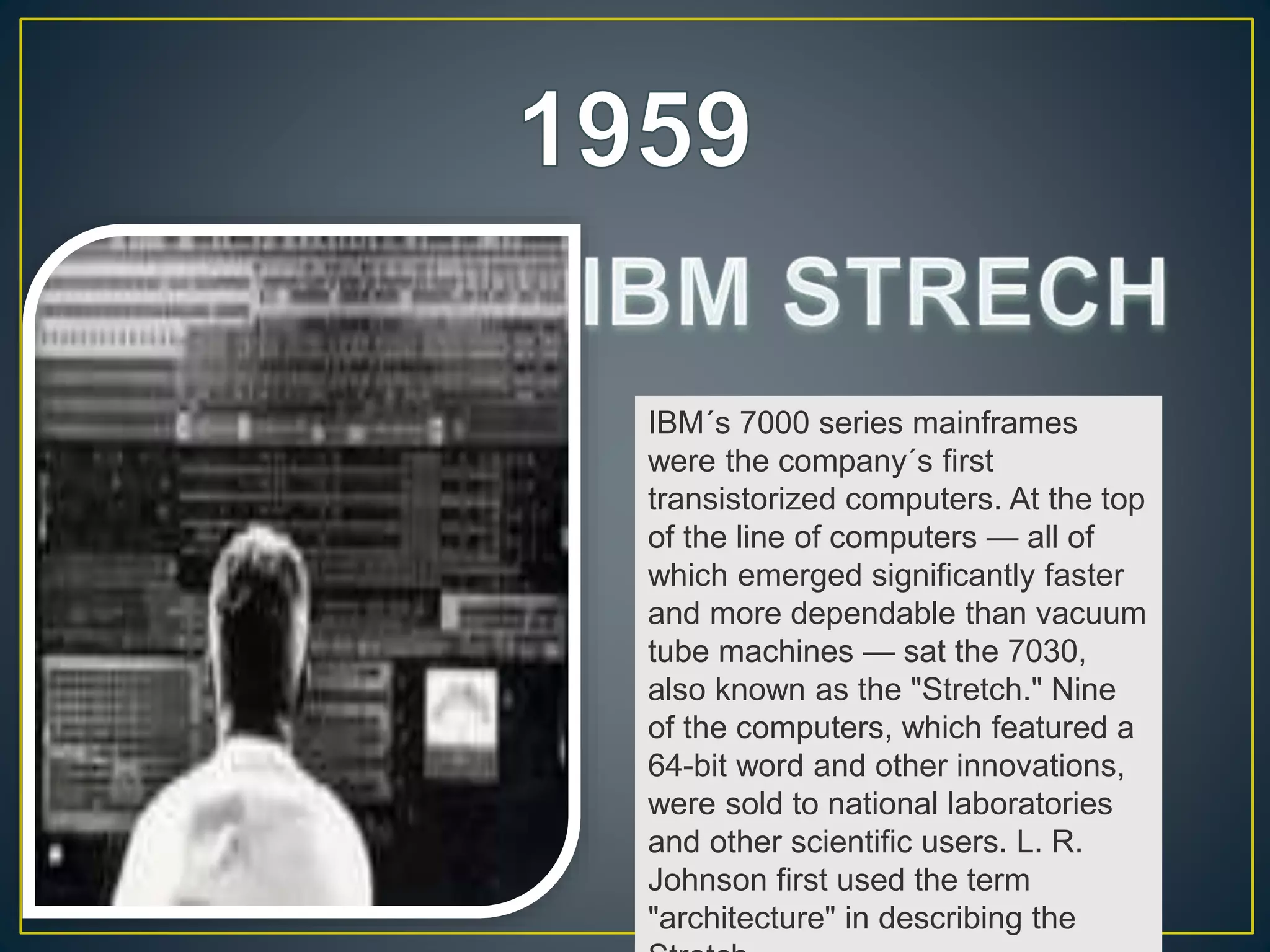
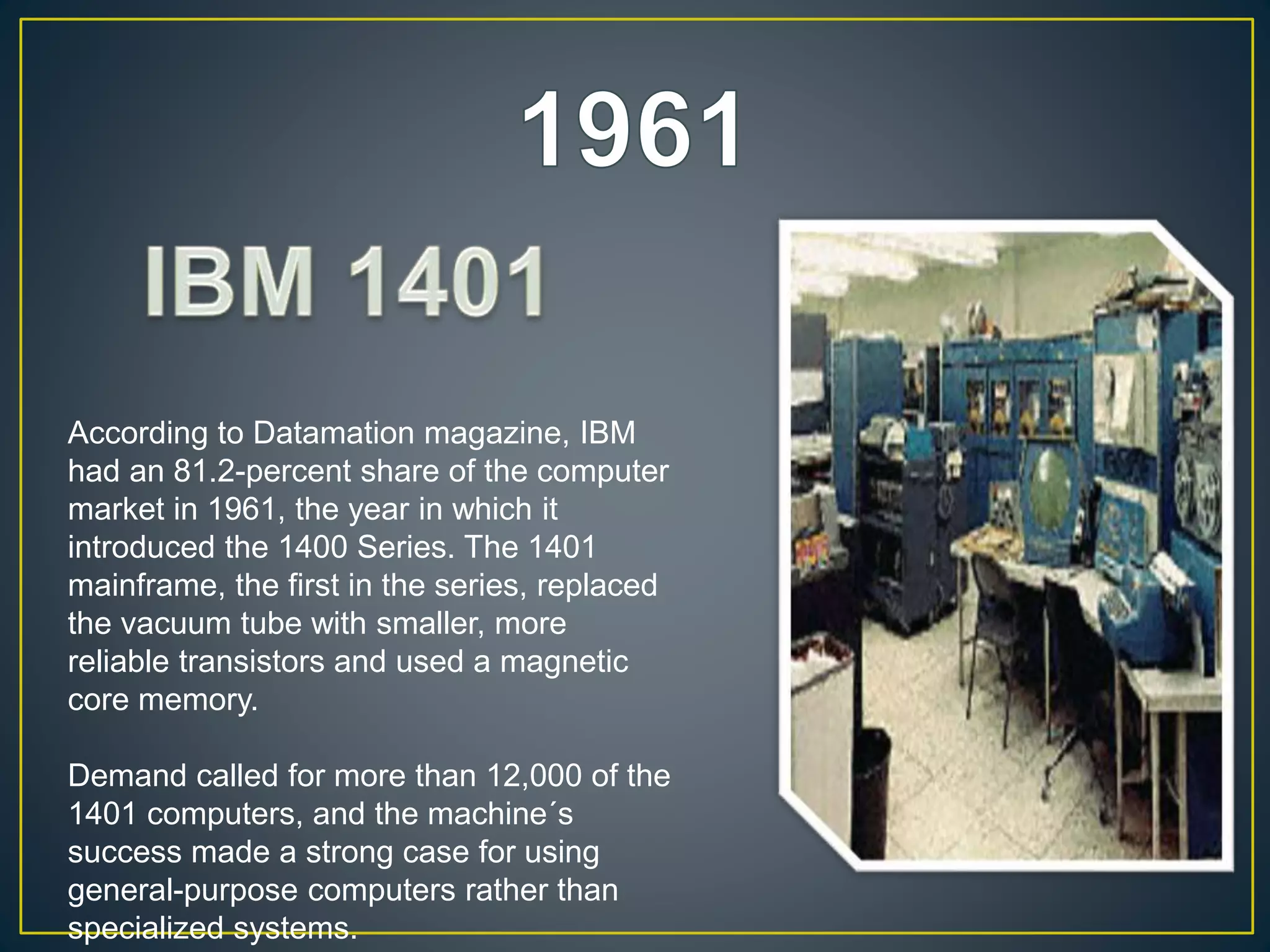
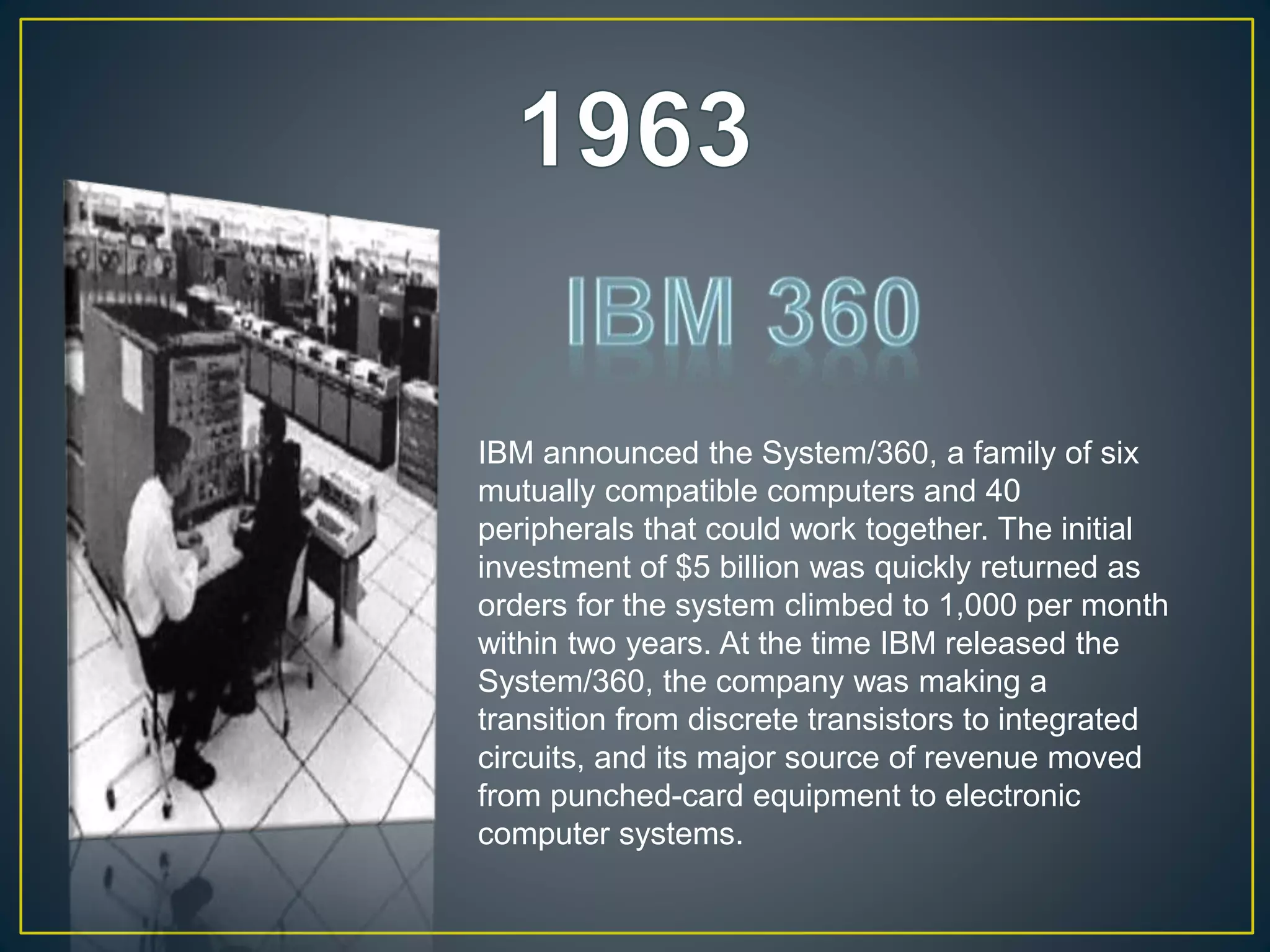
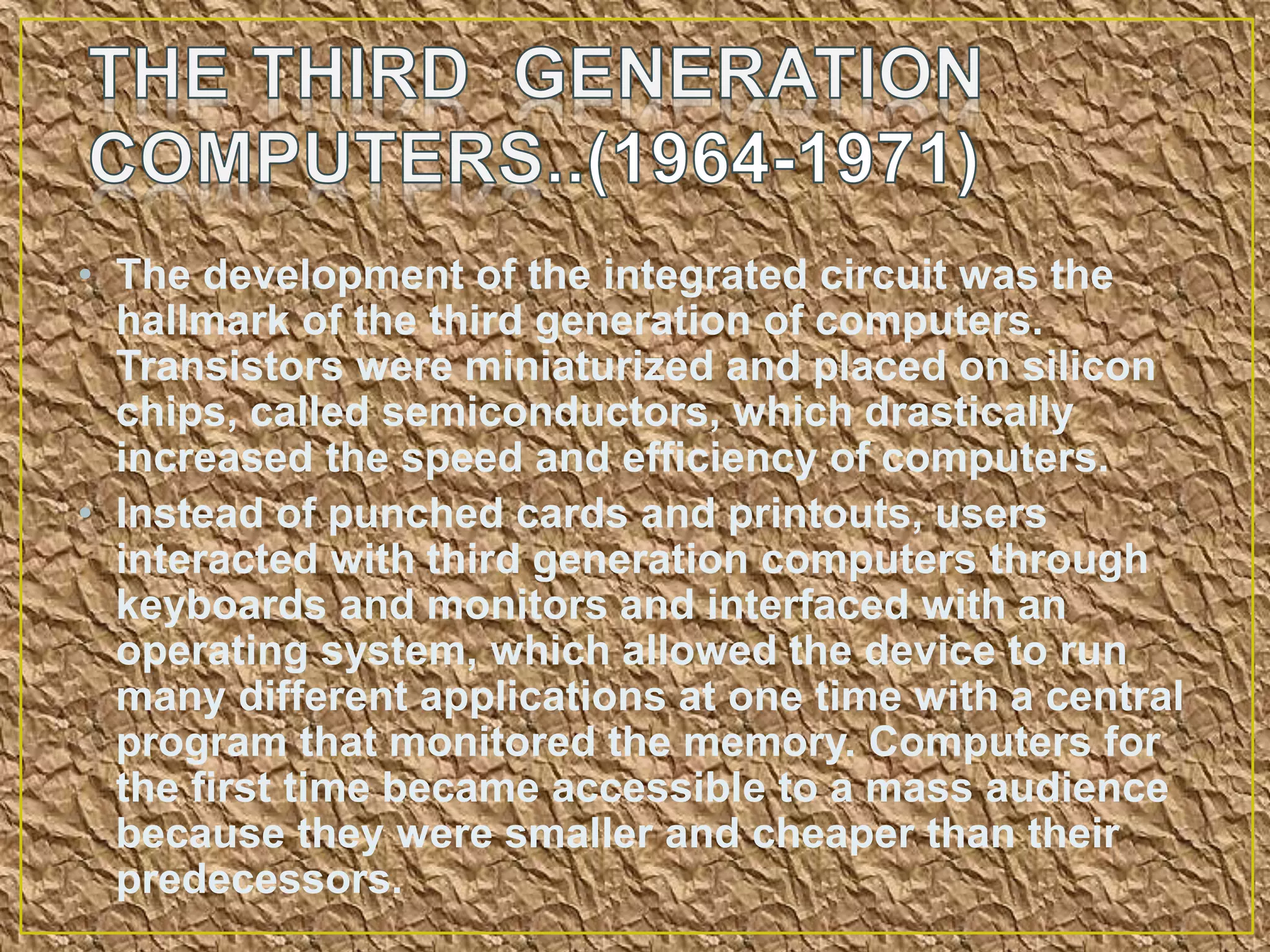
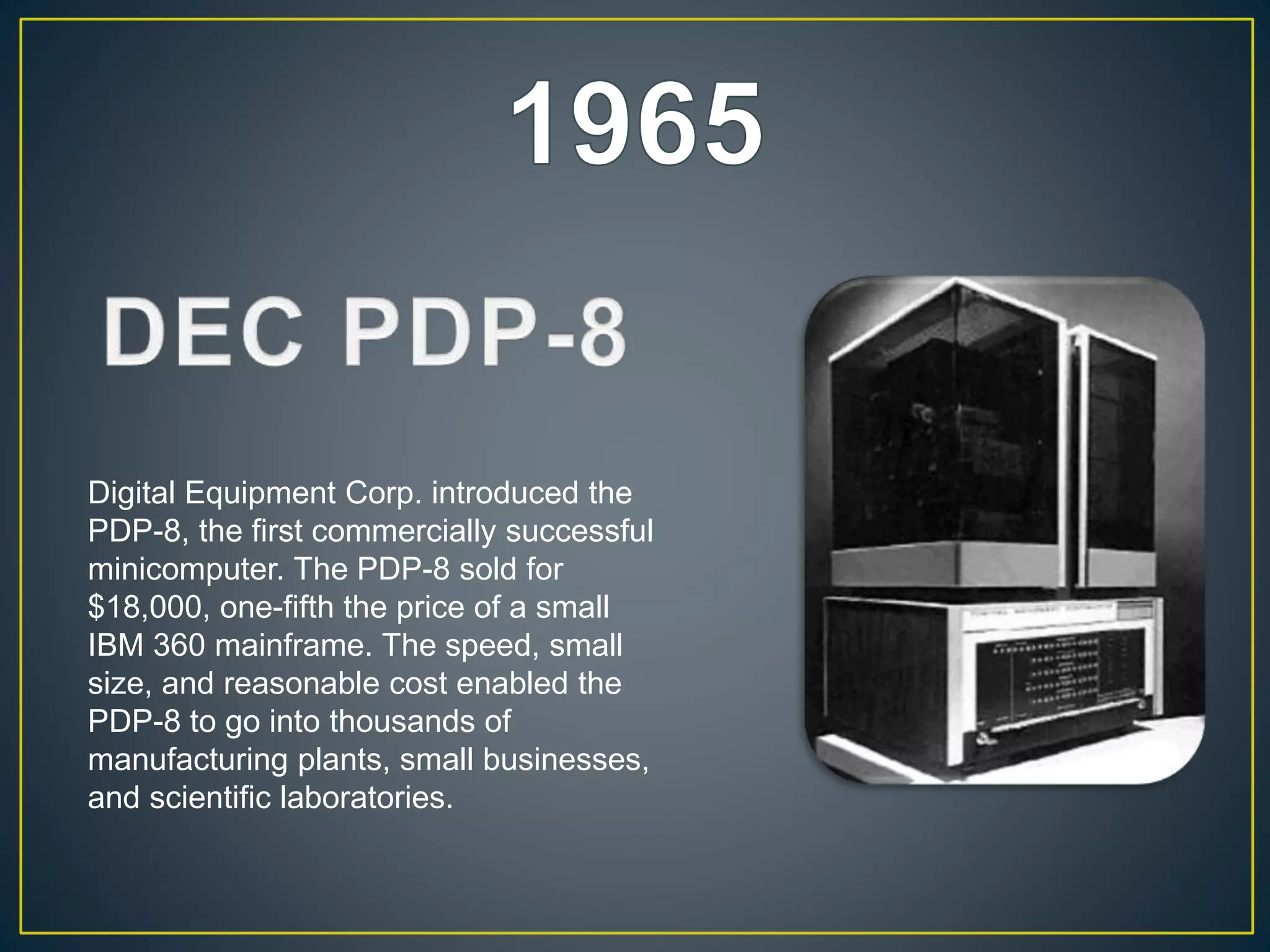
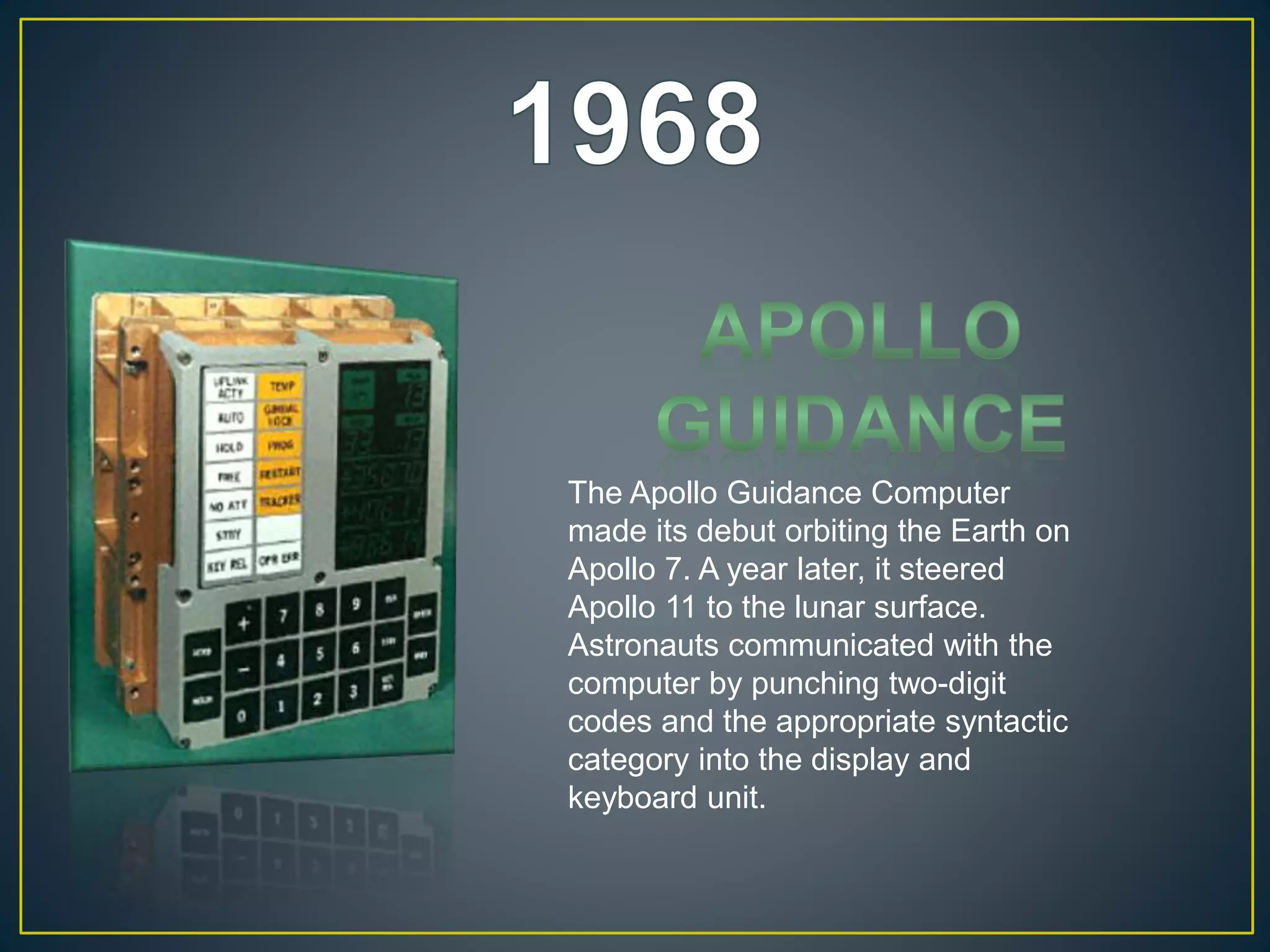
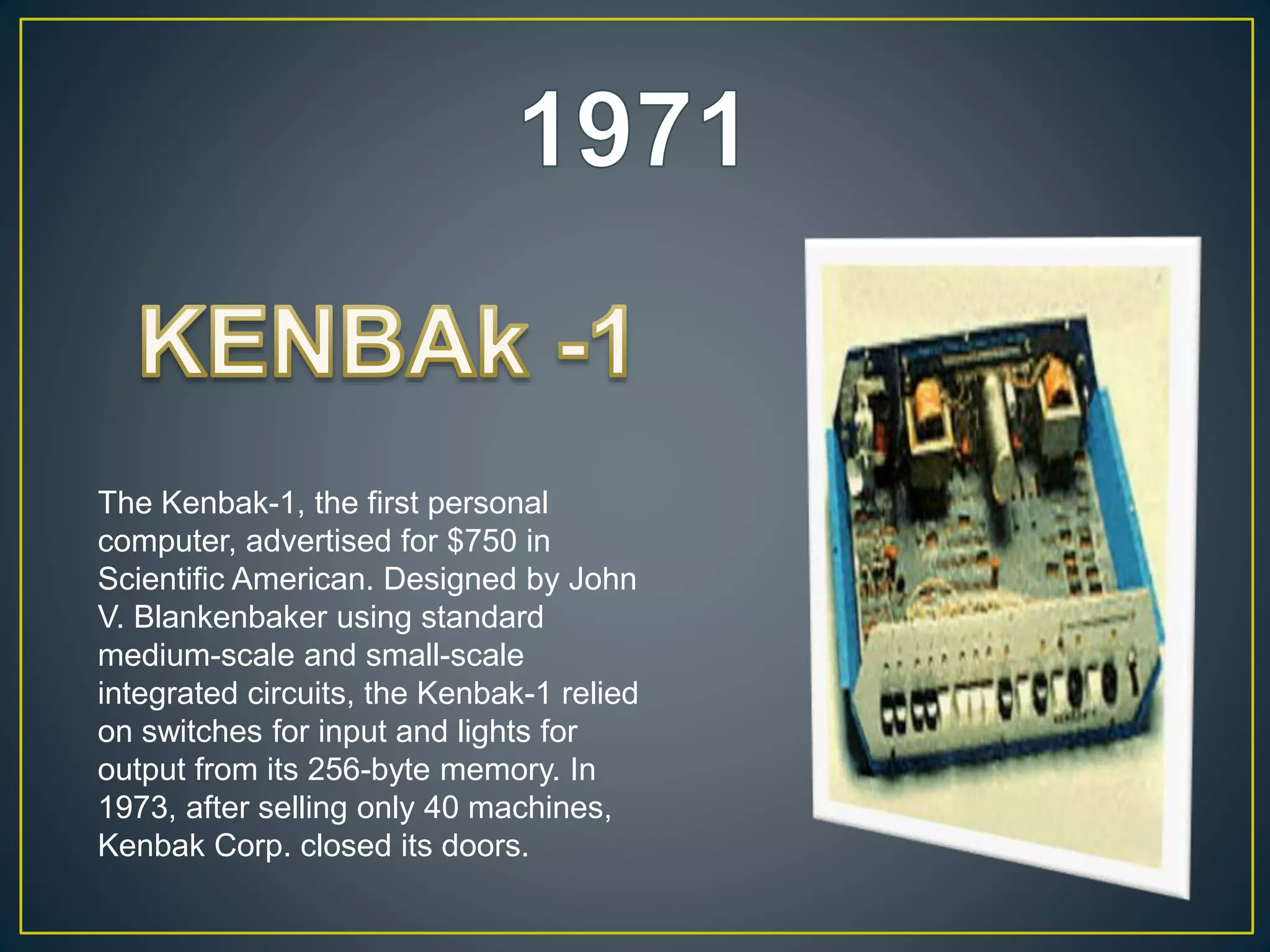

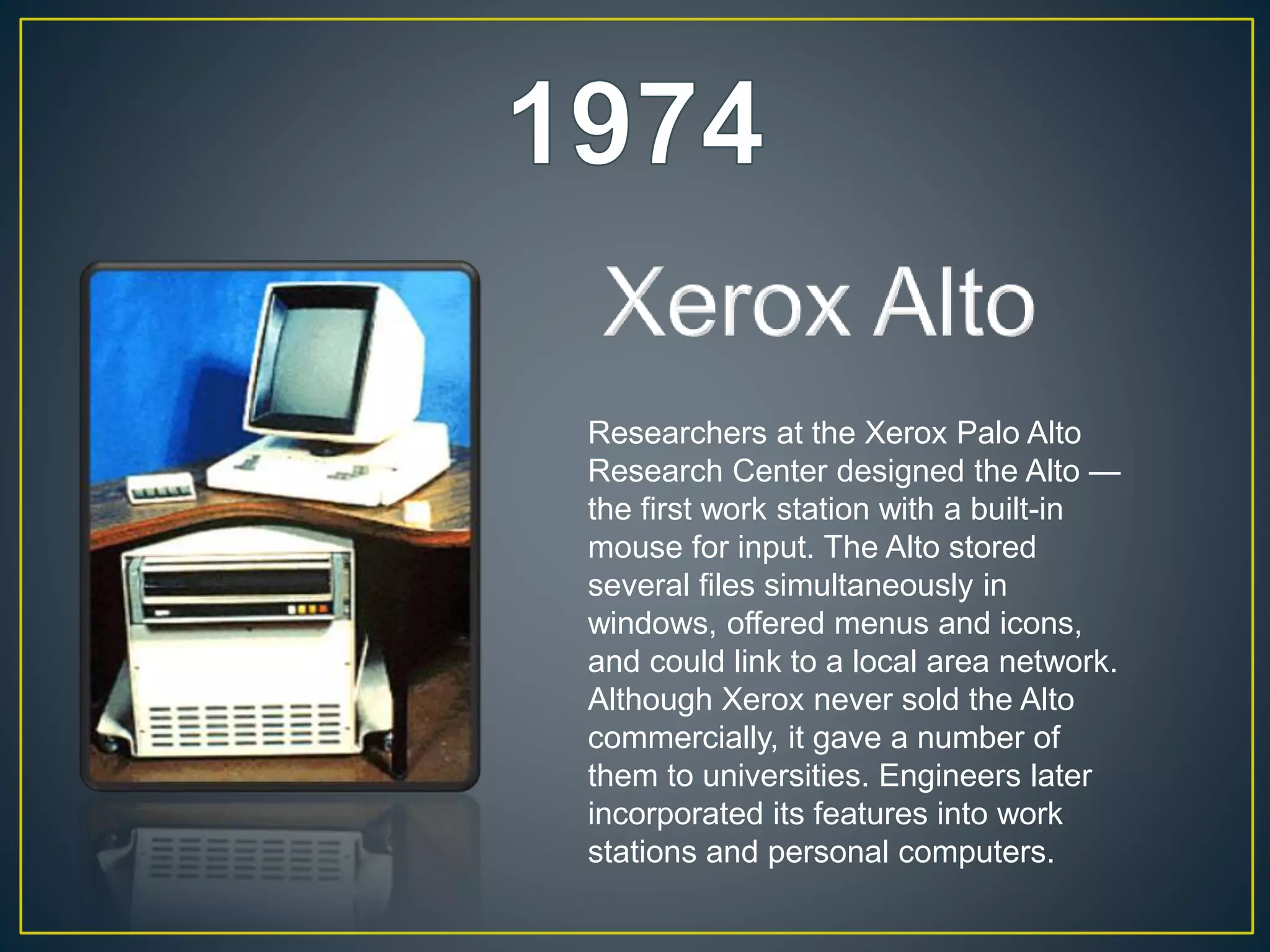
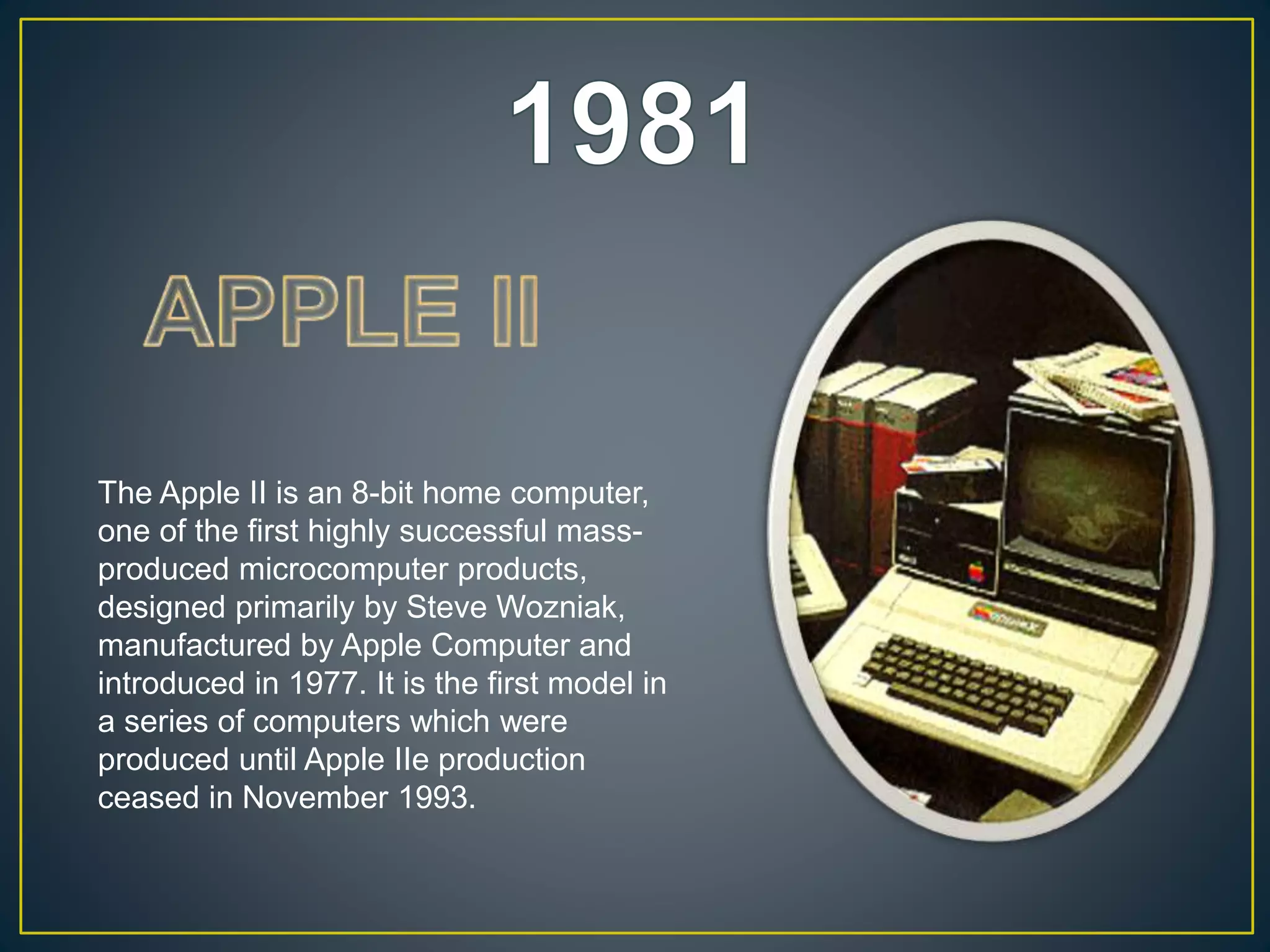

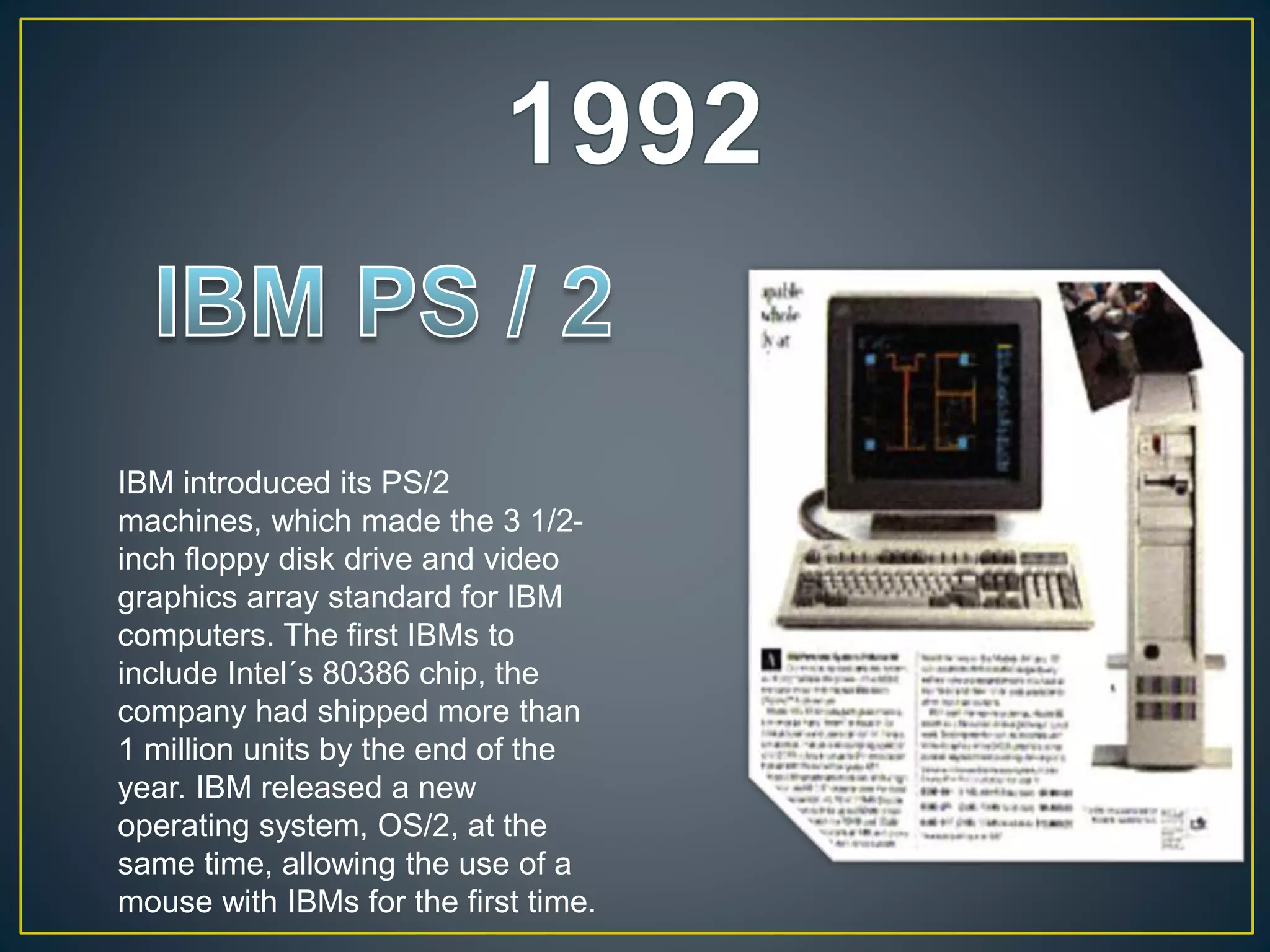
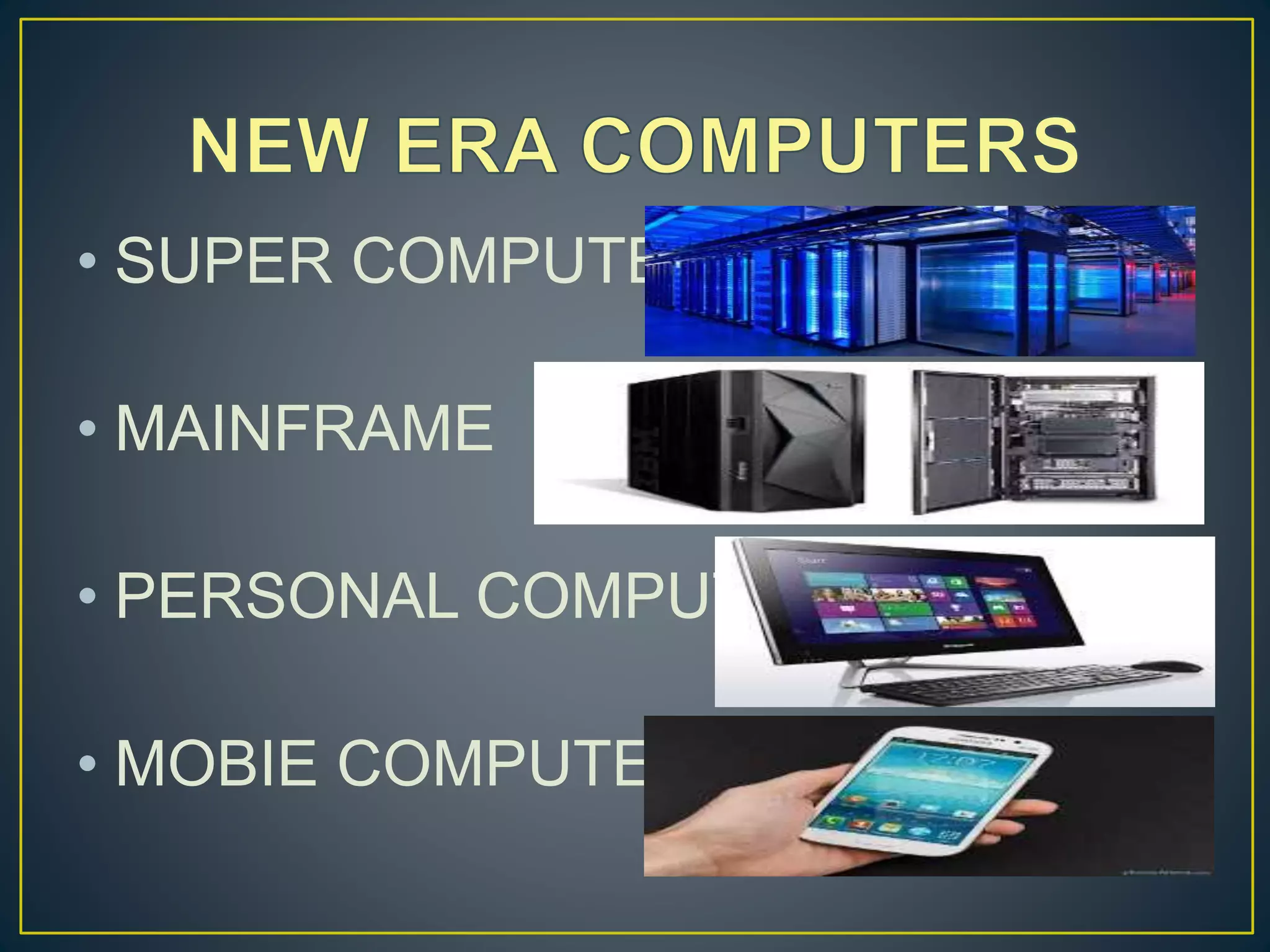
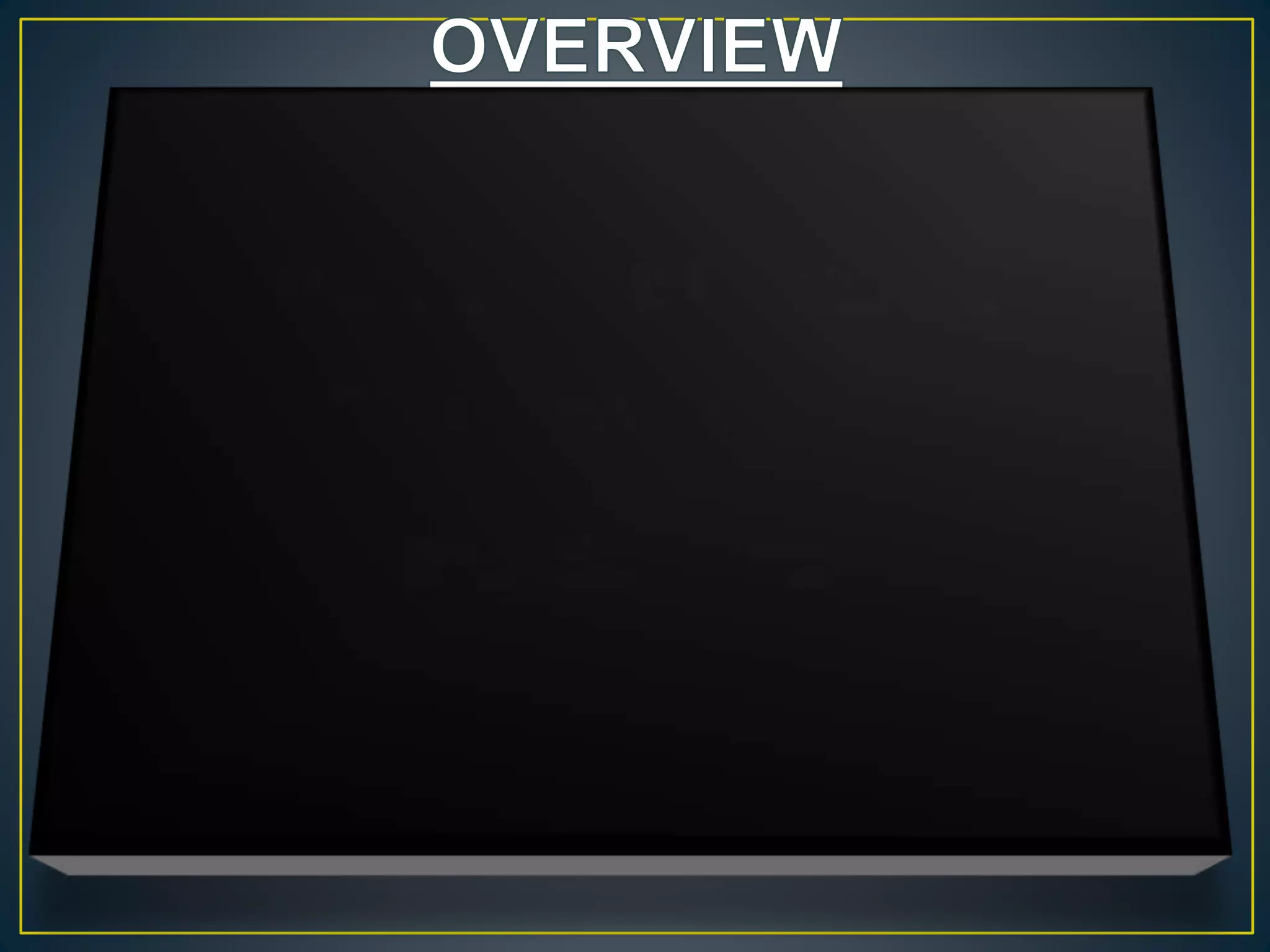
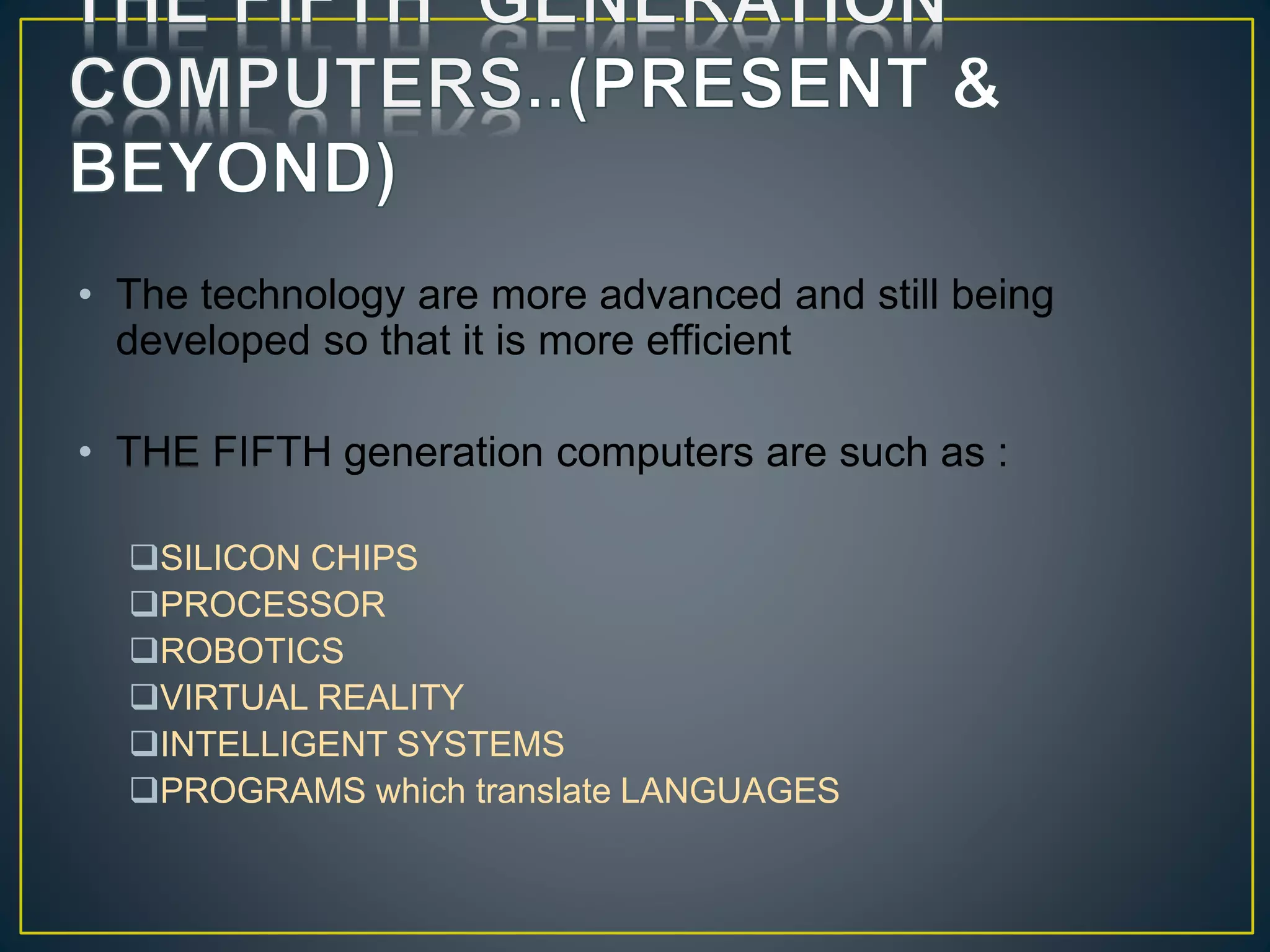
![• An integrated circuit or monolithic integrated circuit (also referred to as
an IC, a chip, or a microchip) is a set of electronic circuits on one small
plate ("chip") of semiconductor material, normally silicon. This can be
made much smaller than a discrete circuit made from independent
components. ICs can be made very compact, having up to several
billion transistors and other electronic components in an area the size of
a fingernail. The width of each conducting line in a circuit can be made
smaller and smaller as the technology advances; in 2008 it dropped
below 100 nanometer,[1] and now it is tens of nanometer.[2]
• ICs were made possible by experimental discoveries showing that
semiconductor devices could perform the functions of vacuum tubes and
by mid-20th-century technology advancements in semiconductor device
fabrication. The integration of large numbers of tiny transistors into a
small chip was an enormous improvement over the manual assembly of
circuits using discrete electronic components. The integrated circuit's
mass production capability, reliability, and building-block approach to
circuit design ensured the rapid adoption of standardized integrated
circuits in place of designs using discrete transistors.](https://image.slidesharecdn.com/evolutionofcomputers-150924075359-lva1-app6891/75/Evolution-of-computers-24-2048.jpg)
![• A microprocessor incorporates the functions of a computer's central
processing unit (CPU) on a single integrated circuit (IC),[1] or at most
a few integrated circuits.[2] All modern CPUs are microprocessors
making the micro- prefix redundant. The microprocessor is a
multipurpose, programmable device that accepts digital data as
input, processes it according to instructions stored in its memory, and
provides results as output. It is an example of sequential digital logic,
as it has internal memory. Microprocessors operate on numbers and
symbols represented in the binary numeral system.
• The integration of a whole CPU onto a single chip or on a few chips
greatly reduced the cost of processing power. The integrated circuit
processor was produced in large numbers by highly automated
processes, so unit cost was low. Single-chip processors increase
reliability as there are many fewer electrical connections to fail. As
microprocessor designs get faster, the cost of manufacturing a chip
(with smaller components built on a semiconductor chip the same
size) generally stays the same](https://image.slidesharecdn.com/evolutionofcomputers-150924075359-lva1-app6891/75/Evolution-of-computers-25-2048.jpg)
![• Robotics is the branch of mechanical engineering, electrical
engineering and computer science that deals with the design,
construction, operation, and application of robots,[1] as well as
computer systems for their control, sensory feedback, and
information processing. These technologies deal with automated
machines that can take the place of humans in dangerous
environments or manufacturing processes, or resemble humans in
appearance, behavior, and/or cognition. Many of today's robots are
inspired by nature contributing to the field of bio-inspired robotics.
• The concept of creating machines that can operate autonomously
dates back to classical times, but research into the functionality and
potential uses of robots did not grow substantially until the 20th
century.[2] Throughout history, robotics has been often seen to mimic
human behavior, and often manage tasks in a similar fashion. Today,
robotics is a rapidly growing field, as technological advances
continue, research, design, and building new robots serve various
practical purposes, whether domestically, commercially, or militarily.
Many robots do jobs that are hazardous to people such as defusing
bombs, mines and exploring shipwrecks.](https://image.slidesharecdn.com/evolutionofcomputers-150924075359-lva1-app6891/75/Evolution-of-computers-26-2048.jpg)
